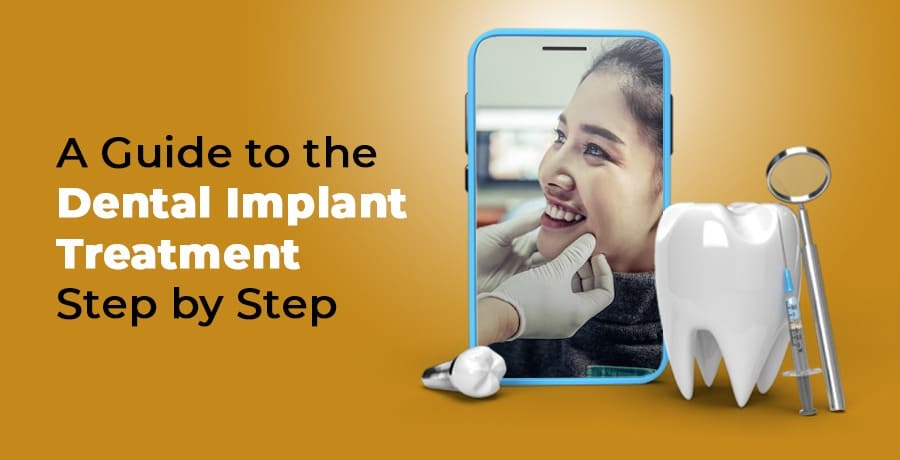Dental implants are the most often utilised way of replacing missing teeth. Titanium, a robust and biocompatible substance that can merge with the jawbone, is the material used to make dental implants treatment. As a result, the implant can support a new artificial tooth or teeth by serving as a permanent dental root.
There usually are three steps to the dental implant process:
1. Implant placement: The first step is to place the implant into the jawbone. This is done under local anesthesia, so you will be awake during the procedure. Surgeon will make a small incision in the gum tissue and then drill a hole into the bone. The implant is then inserted into the hole and secured in place.
2. Healing: The bone will take about 4-6 months to fuse around it after implant placement. During this time, you must wear a temporary dental appliance to fill the gap in your smile.
3. Abutment and crown placement: Once the bone has healed, the next step is to attach an abutment to the implant. The abutment is a small post supporting the artificial tooth or teeth. The crown, a prosthetic tooth that will replace your lost tooth, is positioned in its final position.
Although the dental implant process might take many months, it is a long-term fix for tooth loss. You can have a natural-looking grin and regular chewing skills with dental implants.
Here is a detailed description of the dental implant procedure:
Step 1: Consultation
The first step in the Dental Implant treatment is to consult a qualified implant dentist. The dentist will evaluate your mouth at this session and take digital X-rays to check if you are appropriate candidate for dental implants. Along with outlining your options for treatment, the dentist will also address any queries you may have.
Step 2: Implant Placement
If you are a good candidate for dental implants Treatment, the second is to have the implants placed. This is a surgical procedure that is typically performed under local anesthesia. Dentist will make small incision in the gum tissue and then drill a hole into the bone. The implant is then inserted into the hole and secured in place.
Step 3: Healing
After placing the implants, you must allow the bone to heal around them. This process takes about 4-6 months. During this time, you must wear a temporary dental appliance to fill the gap in your smile.
Step 4: Abutment and Crown Placement
Once the bone has healed, the next step is to attach an abutment to the implants. The abutment is a small post supporting the artificial tooth or teeth. The crown, a prosthetic tooth that will replace your lost teeth, is put in place as the last stage.
Aftercare
After the dental implant procedure, you must follow your dentist's instructions for aftercare. This may include taking pain medication, avoiding strenuous activity, and brushing and flossing your teeth regularly.
Complications
As with any surgery, there are some risks associated with dental implant surgery. These risks include infection, bleeding, and nerve damage. However, these risks are rare, and the benefits of dental implants far outweigh the risks.
Conclusion
Dental implants Treatment are a permanent solution for missing teeth. They can give you a natural-looking smile and the ability to chew food normally.
Are you considering dental implants? If so, contact WORLD OF DENTISTRY today to schedule a consultation with one of our experienced implant dentists.
